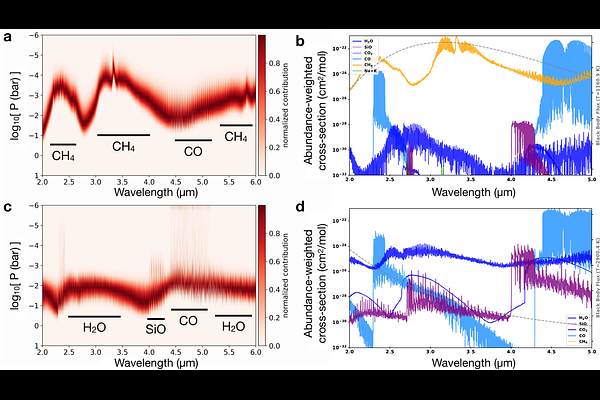SiO and a super-stellar C/O ratio in the atmosphere of the giant exoplanet WASP-121b

SiO and a super-stellar C/O ratio in the atmosphere of the giant exoplanet WASP-121b
Thomas M. Evans-Soma, David K. Sing, Joanna K. Barstow, Anjali A. A. Piette, Jake Taylor, Joshua D. Lothringer, Henrique Reggiani, Jayesh M. Goyal, Eva-Maria Ahrer, Nathan J. Mayne, Zafar Rustamkulov, Tiffany Kataria, Duncan A. Christie, Cyril Gapp, Jiayin Dong, Daniel Foreman-Mackey, Soichiro Hattori, Mark S. Marley
AbstractRefractory elements such as iron, magnesium, and silicon can be detected in the atmospheres of ultrahot giant planets. This provides an opportunity to quantify the amount of refractory material accreted during formation, along with volatile gases and ices. However, simultaneous detections of refractories and volatiles have proved challenging, as the most prominent spectral features of associated atoms and molecules span a broad wavelength range. Here, using a single JWST observation of the ultrahot giant planet WASP-121b, we report detections of H$_2$O (5.5-13.5$\sigma$), CO (10.8-12.8$\sigma$), and SiO (5.7-6.2$\sigma$) in the planet's dayside atmosphere, and CH$_4$ (3.1-5.1$\sigma$) in the nightside atmosphere. We measure super-stellar values for the atmospheric C/H, O/H, Si/H, and C/O ratios, which point to the joint importance of pebbles and planetesimals in giant planet formation. The CH$_4$-rich nightside composition is also indicative of dynamical processes, such as strong vertical mixing, having a profound influence on the chemistry of ultrahot giant planets.